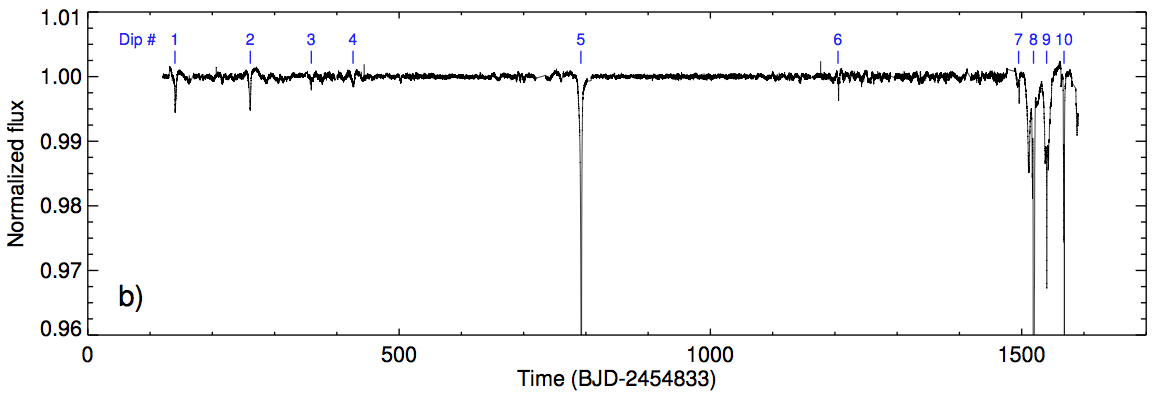
Flux time series for Boyajian’s star, showing the 4-year Kepler observations. From Boyajian et al. (2016).
At journal club today, we discussed a recent study from Jason Wright and Steinn Sigurdsson at PSU astronomy on a strangely dimming star observed by the Kepler mission.
The star has been called the WTF star (‘Where’s the Flux?’), Tabby’s Star (and probably a few more colorful things by perplexed astronomers), but Wright and Sigurdsson invoke the long astronomical tradition of naming noteworthy stars with their discoverers’ last names — they call it Boyajian’s Star, after Dr. Tabetha Boyajian, astronomer royale at Yale.
The strange thing about Boyajian’s star is that the Kepler mission observed the star to dim dramatically several times over a few years, dropping by 20% over the course of a few days several times over a few hundred days. That would be like having a partial solar eclipse that lasted 96 hours every few months. Even stranger, recent analyses of 100+ year old photographic plates suggest the star has been dimming, unnoticed, for a long time.
Various explanations for this strange behavior have been proposed, from enormous swarms of comets obscuring the star to alien megastructures, and Wright does a very good job exploring the different possibilities on his blog.
But as usually happens in astronomy, the most exciting explanations are the least likely (probably not an alien Dyson sphere), and Wright and Sigurdsson favor the idea that some sort of interstellar material between the Earth and Boyajian’s star is obscuring the star. Wright and Sigurdsson point out that, by measuring the distance to the star, the Gaia mission will help us resolve the mystery.